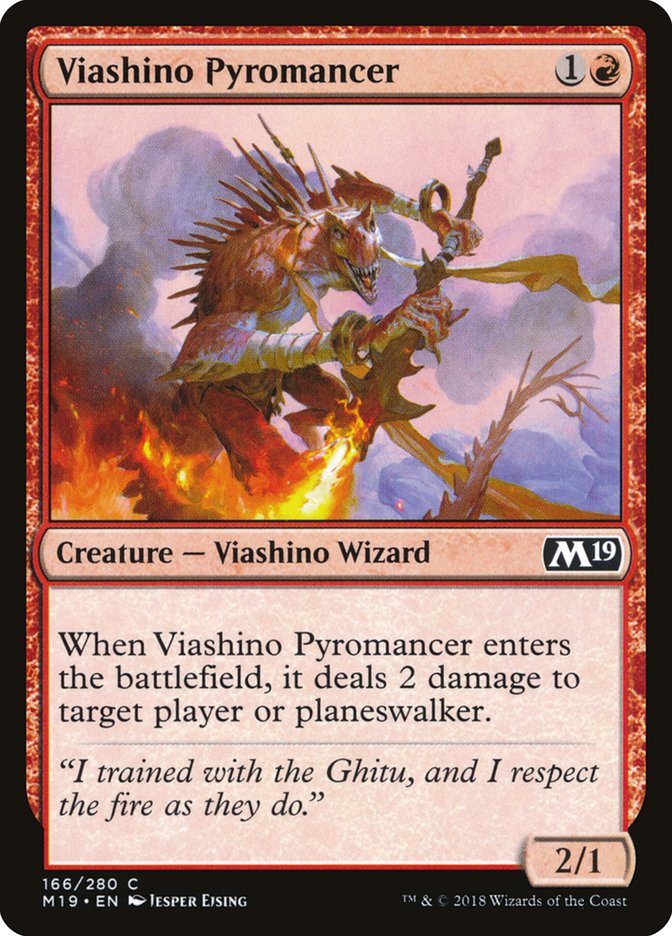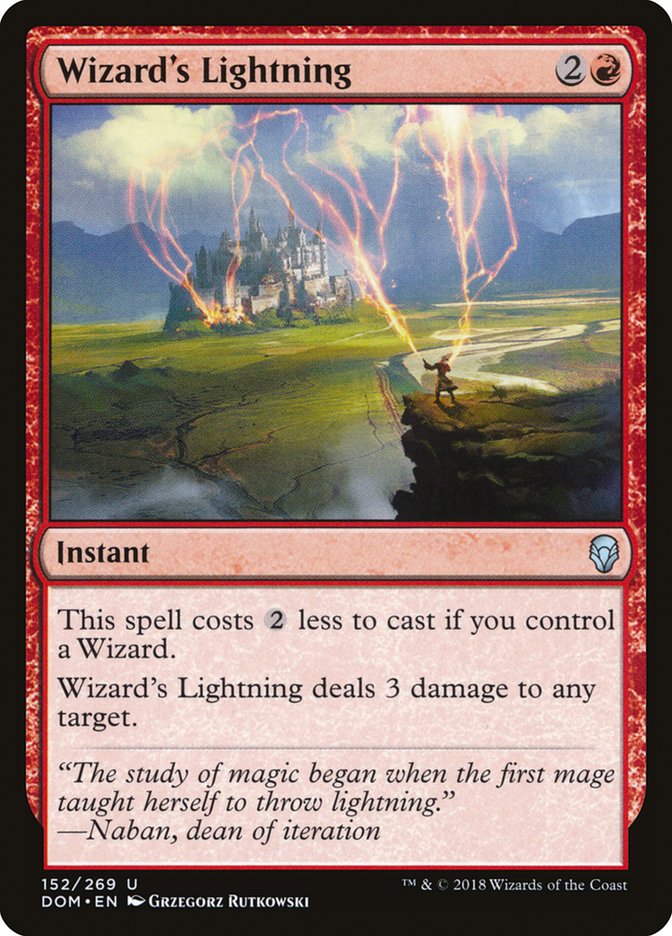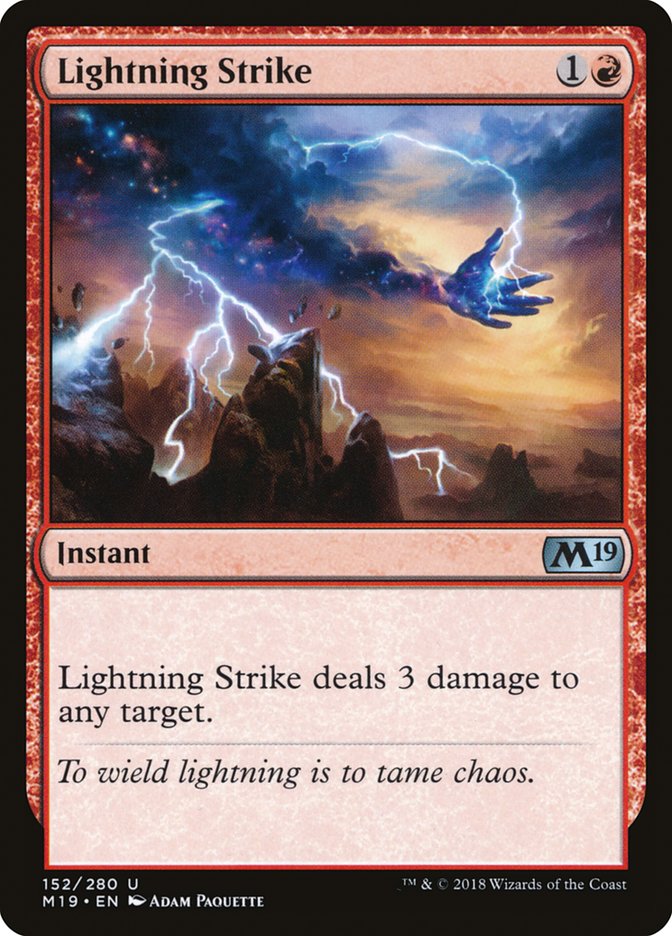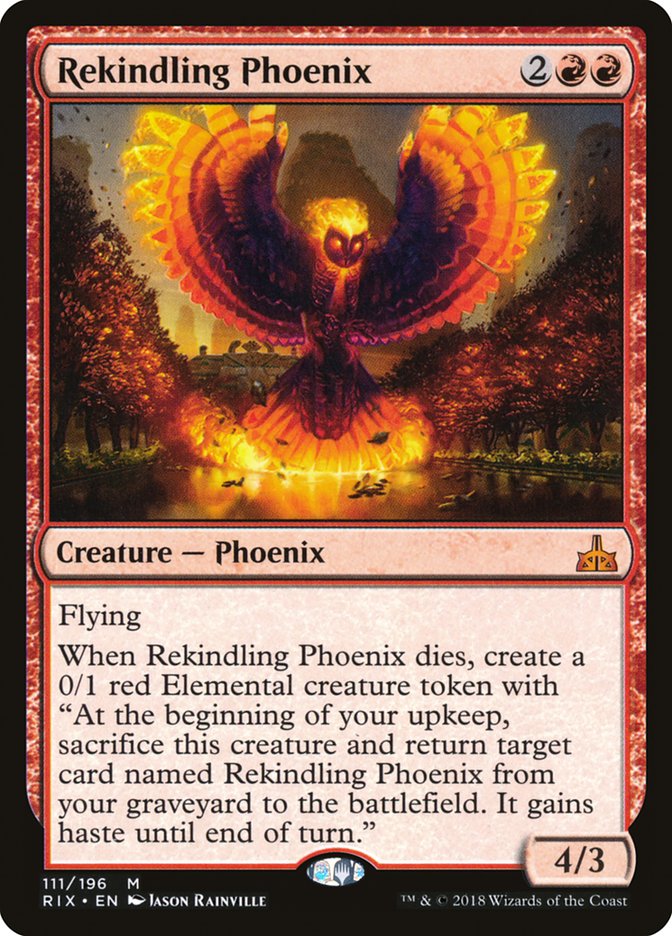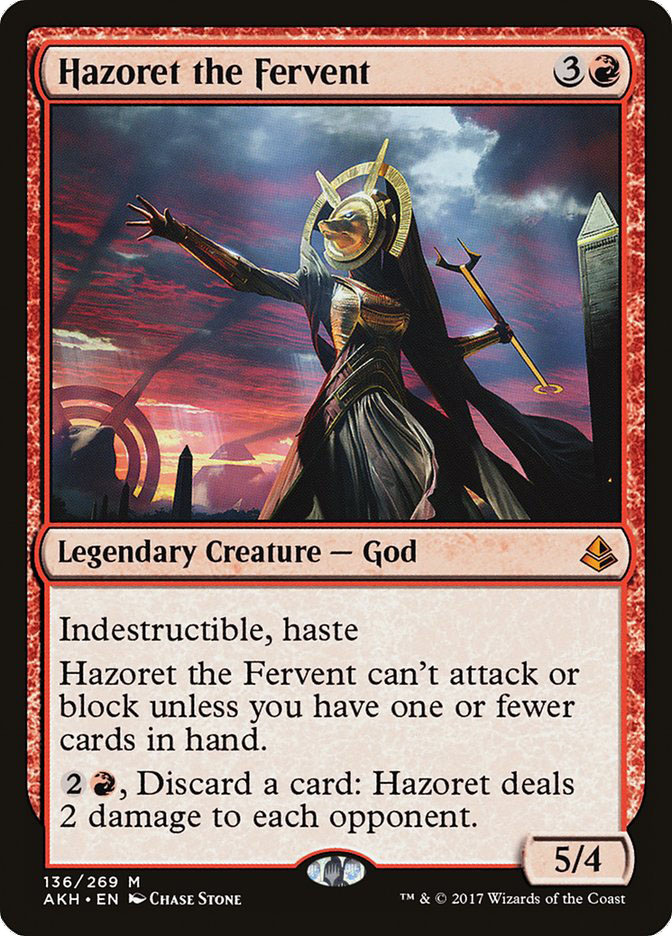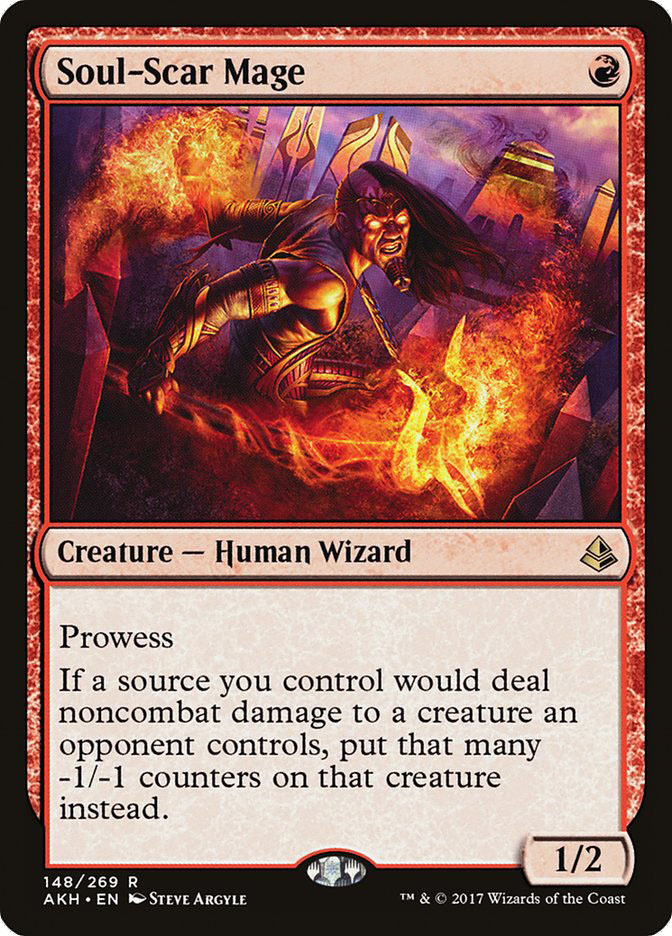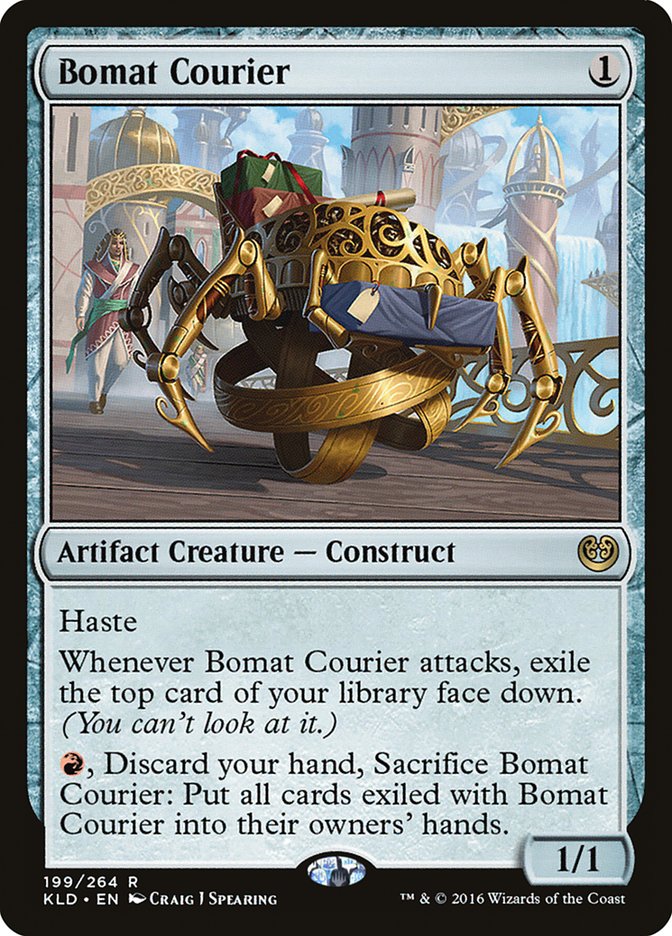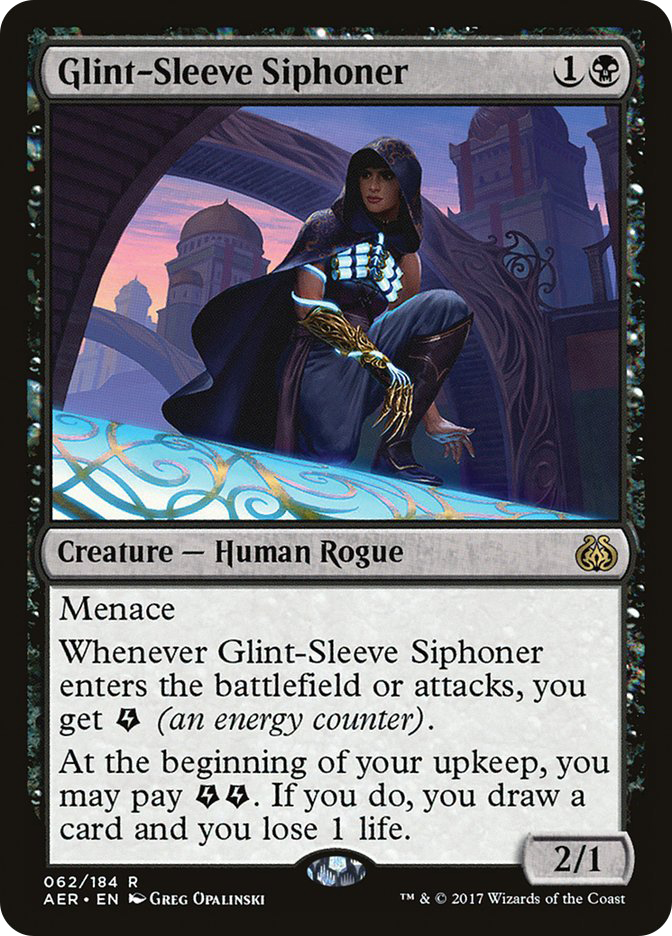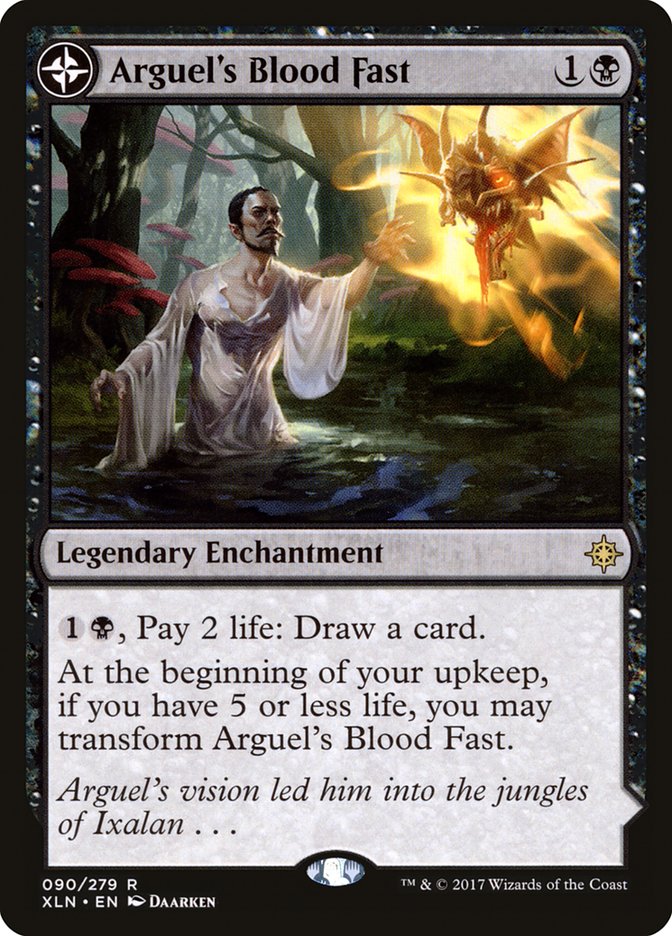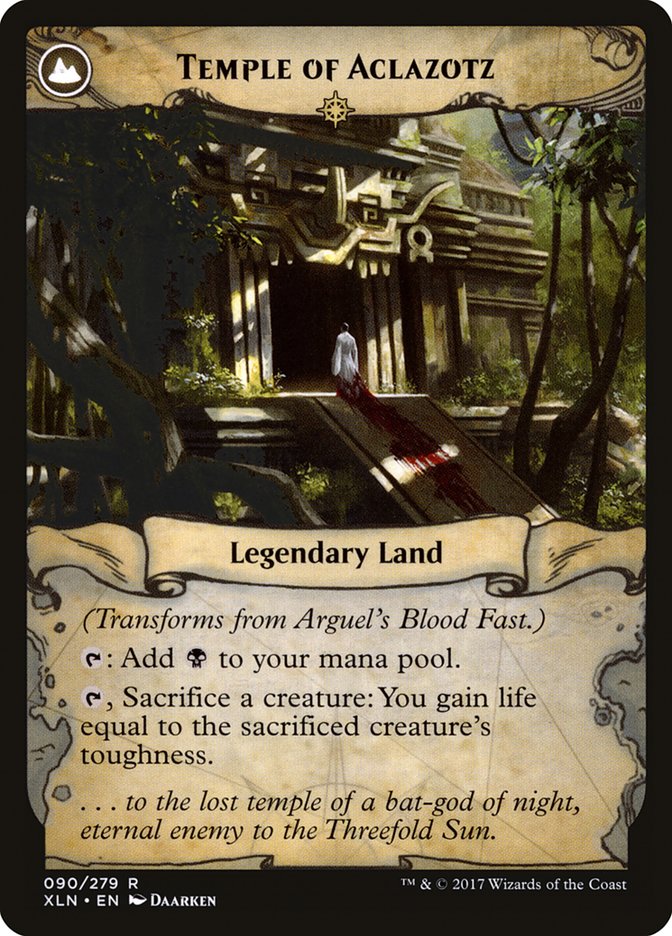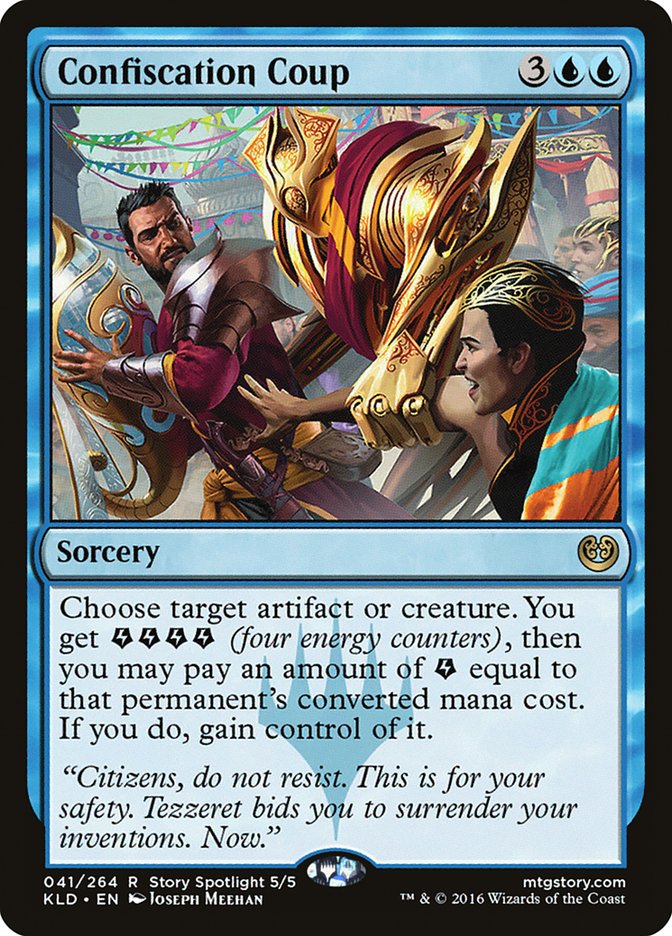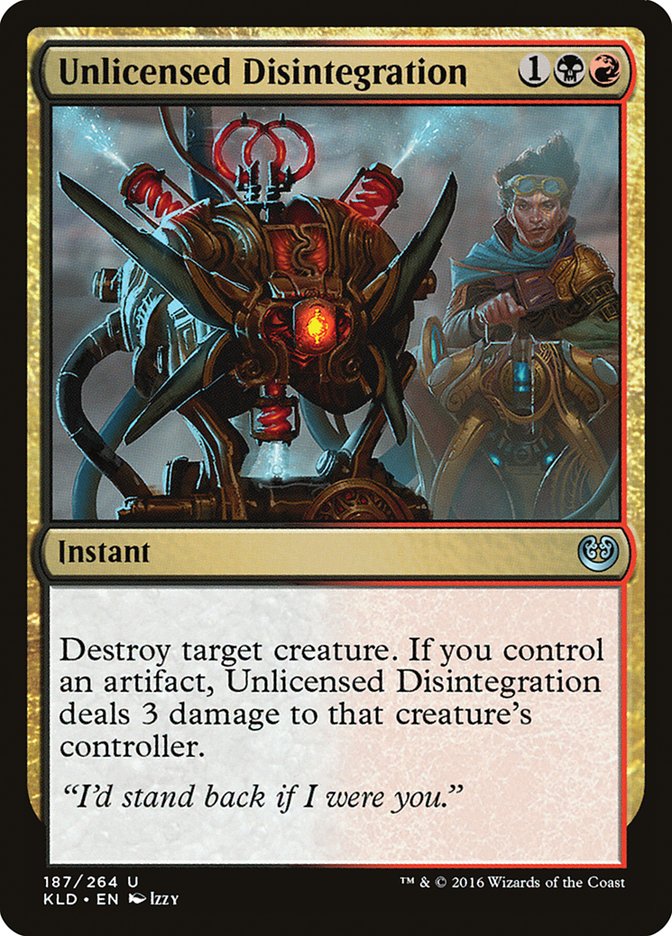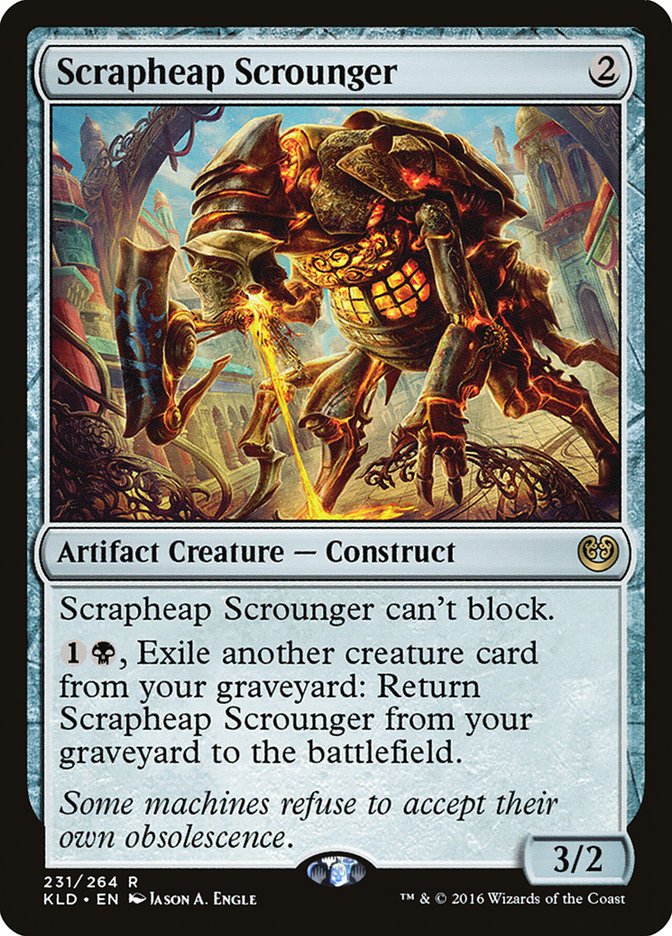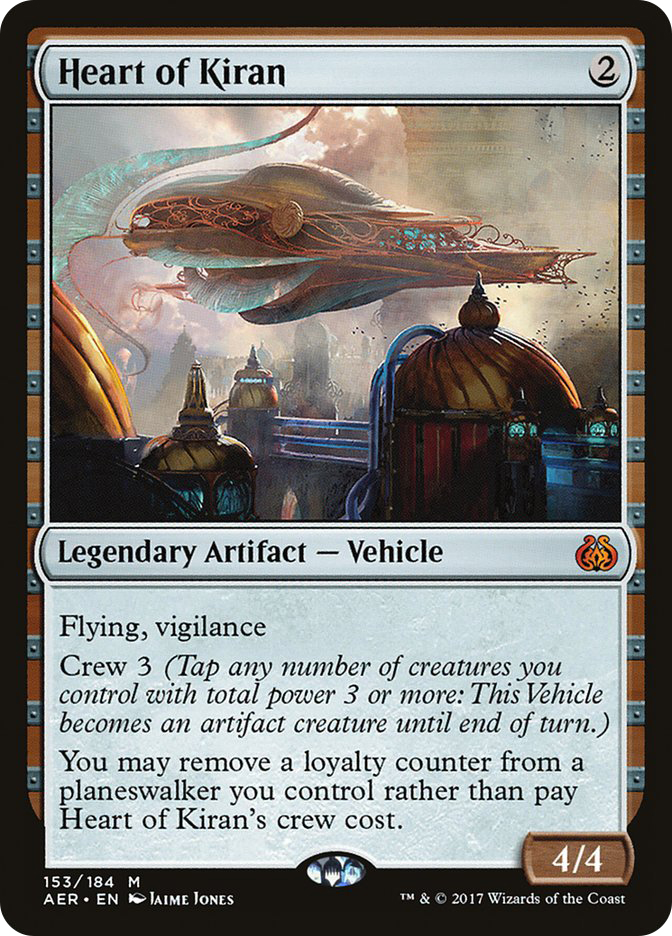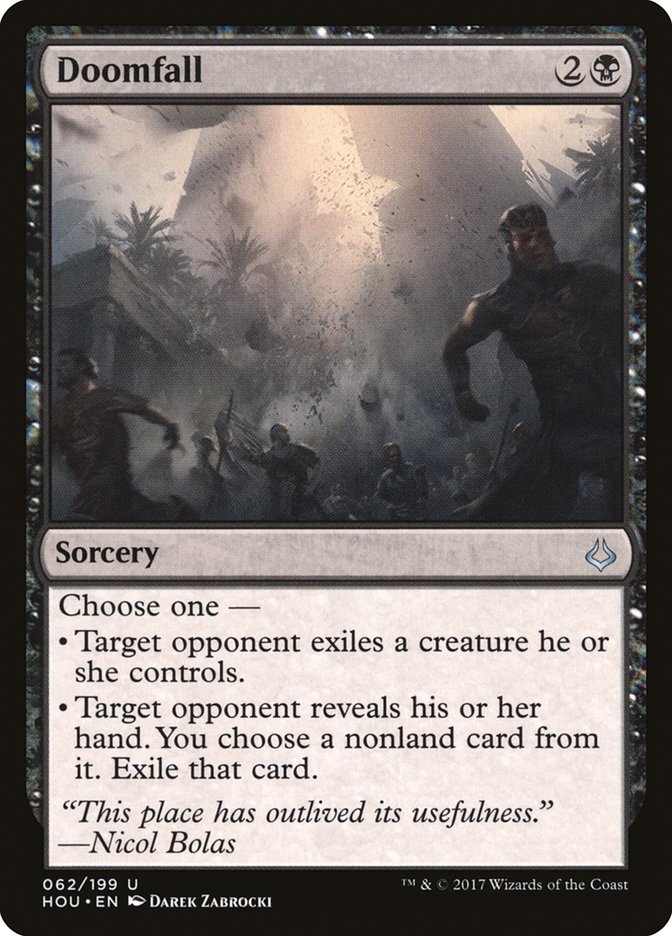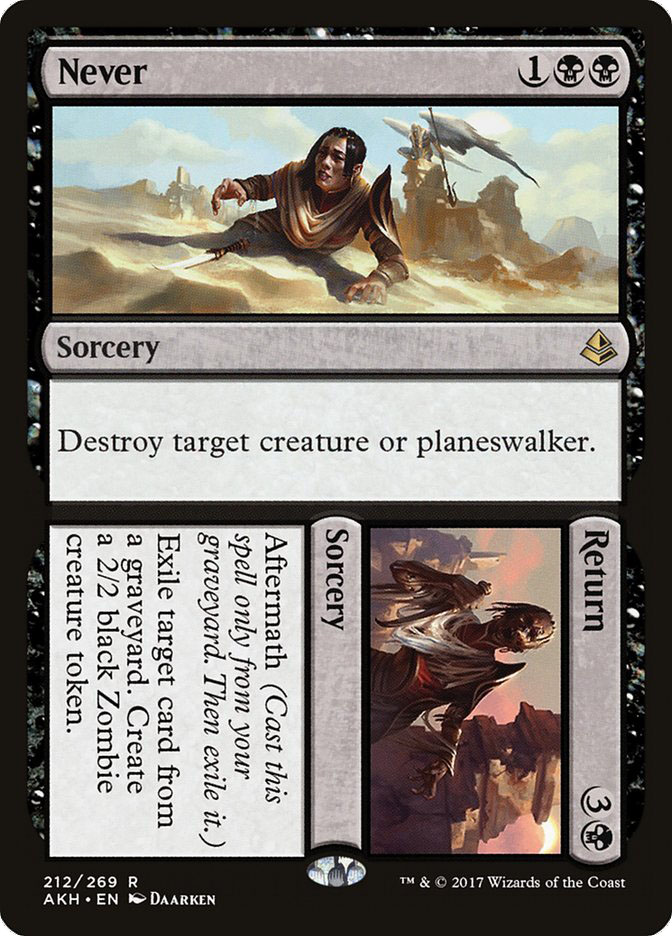Coming up with article topics can be hard. Before I’d started writing, I
was under the impression that explaining a concept in a way that is
digestible to those who didn’t already understand the idea would be the
most difficult part of begin a Magic writer. I was wrong. Once you cross
the 100 article threshold, it becomes more and more difficult to find
topics that are fresh, worth writing entire pieces about, and something you
can teach.
Luckily, this week wasn’t so hard.
After a disappointing weekend failing to Grapeshot people, I was offered
Autumn Burchett’s Nationals-winning deck, already sleeved, to play in the
Standard Classic at SCG Baltimore.
I have a NICE group chat#SCGBALT
pic.twitter.com/IbcgpugPpT—
Emma Handy (@Em_TeeGee) August
26, 2018
I guess you could say the tournament went well.
Despite my original hesitance to play in an event I hadn’t put in any kind
of preparation for, largely in part due to my inexperience against
Mono-Green Aggro splashing blue and Bant Nexus, I wasn’t punished. My
experience from SCG CON and Grand Prix Pittsburgh earlier this year helped
me navigate a tournament in which I was paired against Goblin Chainwhirler
decks a staggering eight out of ten rounds. With Grand Prix Richmond and
the latter set of RPTQs on the horizon, writing about how to duplicate this
success is a no-brainer.
First, the list:
Creatures (14)
Planeswalkers (1)
Lands (21)
Spells (24)

For the basic outline of how the deck words, Autumn Burchett had a
fantastic article last week
on their journey to winning English Nationals for the second year in a row,
and Jadine Klomparens had an
article outlining how to play against the rest of the format
.
The most fundamentally important thing to understand about the deck and
what it needs to do to beat red is that B/U Midrange is a pile of
conditional answers, and it’s your job to make them line up correctly.
Blowing Essence Scatter on Scrapheap Scrounger against the Hazoret the
Fervent/Rekindling Phoenix deck is generally foolish. Using Cast Down on
Soul-Scar Mage instead of saving it for Glorybringer, Ahn-Crop Crasher, or
Goblin Chainwhirler is going to translate to a game being lost.
The easiest thing that people tend to mess up against red decks is not
properly using their life total as a resource. It’s generally going to be
worth a point or two of damage from Scrapheap Scrounger or Soul-Scar Mage
to be sure that Essence Scatter or Vraska’s Contempt doesn’t end up getting
wasted on a wholly unimportant threat.
Trading resources and making land-drops is going to end up bridging to the
later part of the game, during which The Scarab God and Torrential Gearhulk
turn the corner on a dime. Most of red’s resources aren’t particularly good
at playing defense.
Taking this overarching plan into consideration, the rate at which we’re
interested in exchanging resources and protecting our life total is going
to change from red variant to red variant.
Creatures (24)
- 4 Bomat Courier
- 4 Soul-Scar Mage
- 4 Earthshaker Khenra
- 4 Ghitu Lavarunner
- 4 Goblin Chainwhirler
- 4 Viashino Pyromancer
Lands (20)
- 20 Mountain
Spells (16)
Sideboard

My single loss in the tournament came at the hands of the burn-heavy
Wizards variant of the deck. The deck is commonly referred to as “Mono-Red
Flame of Keld,” but that isn’t the card that defines the matchup for us. Some people tend to
just lean into the consistency of a low-to-the-ground aggro deck, without
use for something as flashy as the Saga. Life is far more precious against
this version of the deck, as they have more direct damage that a Fatal Push
or sizable blocker won’t be able to stop:
What can also be leveraged is taking what they have and realizing that we
don’t have to save our spells for the more powerful cards that we can
expect them not to have.
Rekindling Phoenix demonstrates an interest in trying to overpower removal
spells, rather than go under them. Wizard’s Lightning and its fellows
aren’t trying to fight this fight, meaning that Essence Scatter and
Vraska’s Contempt can be used more aggressively than they would otherwise.
In recent weeks, both cards have been on the decline in the maindeck of the
mono-red deck. Chandra had always been in the sideboard, but Hazoret’s
diminishing in particular is a clear sign that the deck is interested in
casting as many spells as possible, as quickly as possible, all while
trimming on lands in the name of spell density.
When playing removal spells against the one-drop Wizards, I tend to
sequence things similarly to how I would against Infect in Modern and
Legacy. The difference is in the urgency presented by each deck. Glistener
Elf and Blighted Agent are effectively attacking for two each turn, whereas
Soul-Scar Mage and Ghitu Lavarunner are only attacking for one each. Taking
chip damage for a couple of turns is fine if it means that a removal spell
will be cast on a three-mana threat instead.
Soul-Scar Mage, in particular, creates an uncomfortable dynamic for the red
player to navigate. Every single burn spell that player casts before the
Soul-Scar Mage deals its combat damage for the turn represents an
additional point of power the ‘Mage will be dealing that turn. The tradeoff
is that if they cast too many spells into open mana, they run the risk of
demonstrating that there isn’t a reason for the B/U Midrange player to hold
up mana and having their Soul-Scar Mage die before it deals any combat
damage at all.
Ghitu Lavarunner presents a similar dynamic during the early turns. A
single point of power isn’t generally going to be worth a ton, but the
difference between one and two points of power on a creature is fairly
significant in terms of reducing a clock.
In either case, casting a removal spell likely isn’t worth it if it’s the
difference between sixteen and seventeen life. Just hold Fatal Push in case
they have something more threatening coming down during their post-combat
main phase.
There’s a pretty neat rule of thumb that I have for Bomat Courier that’s
made it pretty easy to determine how to play against it: If your opponent
controls a Bomat Courier, you need to kill it.
If left unchecked, a Bomat Courier is going to be worth more damage than
any single card out of the red decks. For perspective: I had an opponent
tap out to cast Hazoret the Fervent while they controlled a Bomat Courier
with five cards under it. I only had Vraska’s Contempt and The Scarab God
in my hand at the time, and casting Vraska’s Contempt on the Bomat Courier
was one of the easiest decisions of the entire tournament.
Getting hit by a Bomat Courier during the first couple of turns during the
game is generally going to be fine because the red player hasn’t had the
chance to empty their hand just yet, and Bomat Courier is still charging
up, so to speak. The issue is that it has to be answered at some point
before the cards under the Courier are equal to or greater than the number
of cards in the red player’s hand.
Sideboarding has been a little shifty for me in this particular matchup,
but I’ve arrived at something like this:
Out:

In:

The biggest point of contention for me is whether I would rather have the
second copy of Duress or the first copy of Spell Pierce. Drawing multiple
copies of Duress can be particularly awkward, but a fair chunk of the red
decks are looking to Vance’s Blasting Cannons and/or Chandra, Torch of
Defiance after sideboard. Couple that with the fact that the deck is
interested in doing its best impression of Lava Spike’s greatest hits, and
having some number of answers to spells is important. The draw to Spell
Pierce is that it is slightly better against a player who is in top-deck
mode.
A common trend that we’re going to touch on throughout this article is
Glint-Sleeve Siphoner and its value in the matchup. I’m of the firm belief
that Glint-Sleeve Siphoner shouldn’t be in the deck and it is even worse
against the burn-heavy version of red. The objective of the Shock-Lightning
Strike-Wizard’s Lightning deck is to kill the opponent before they have the
chance to utilize all their resources. Exchanging life for additional
resources is playing to their plan, not ours.
Any time you have a chance to exchange Glint-Sleeve Siphoner for another
creature in combat, do it. Trade it for a Viashino Pyromancer. Throw it in
front of Soul-Scar Mage if they only have a single mana. Make them show you
the Shock.
Alternatively, you can sandbag Glint-Sleeve Siphoners with the goal of
using Champion of Wits to convert them into real cards. If there aren’t
other cards to play, feel free to run out the Siphoners and cross your
fingers, but Goblin Chainwhirler has been known to listen to DMX and “Give
it to ’em,” as it were.
If Vraska’s Contempt and Fatal Push are the most important cards in the
matchup, Arguel’s Blood Fast rounds out the holy trinity, so to speak. The
front half isn’t particularly important, but the Temple of Aclazotz mode is
what puts the game out of reach. There comes a point where just casting and
sacrificing The Scarab God every turn is going to be more powerful than
anything the red deck can draw.
If you ever find yourself in a situation that you’re at two or three life
and have a copy of Torrential Gearhulk or The Scarab God against a red
opponent with some one- or two- power creature and nothing else, consider
sacrificing the creature before passing the turn back to them. That way it
doesn’t give them the opportunity to respond to the activation of the land
and Lightning Strike for lethal.
Using the card proactively and aggressively is frequently going to be
correct, as the later phases of the game tend to involve the red player
proverbially flipping coins and hoping to rip burn spells in order to break
through a wall of 4/4 Zombies.
Admiral Ackbar senses tingling.
Without seeing Glorybringer or Rekindling Phoenix, stay away from
Confiscation Coup in this matchup. Stealing Goblin Chainwhirler is
decidedly fine, but we aren’t particularly interested in stealing
a creature that dies to their varying flavors of Searing Spear. Our curve
is already a little bit too high, so adding another five-drop that isn’t
guaranteed to be powerful is frequently a losing proposition.
Stealing Hazoret the Fervent is nice, but the fact that it can be difficult
to attack and block with her after she’s stolen makes this little more than
a costly removal spell. Don’t fall for it here.
Slam it it like you’re about to introduce someone to a jam.
It isn’t going to feel good if the opponent spends two burn spells killing
The Scarab God, but it blocking something was probably going to prevent
less damage, so it’s probably fine in the grand scheme of things.
It’s rarely correct to throw The Scarab God in front of Soul-Scar Mage
unless it’s a life or death situation. A Wizard’s Lightning or Lightning
Strike results in Soul-Scar Mage eating The Scarab God, and that is
absolutely as embarrassing as it sounds. Taking the point of damage from
Soul-Scar Mage is probably worth the opportunity to untap with it and start
turning the corner.
The last thing to say on the matchup is that two untap steps with The
Scarab God will generally be enough to win the game. Bringing back Bomat
Courier as a 4/4 with haste; Ahn-Crop Crasher and Earthshaker Khenra as
near-unblockable 4/4s with haste; or Ghitu Lavarunner as a 5/4 with haste
is going to end the game fast. Their creatures are as good at
attacking as they are bad at blocking; use that to your advantage.
R/B Aggro is not the same animal as Mono-Red.
It sounds obvious to put it in such terms, but common opinion lumps the two
together, and the approach I take to each matchup is different enough that
it feels necessary to spell it out. Before getting into that, the things
that don’t change:
- Kill Bomat Courier quickly
- Don’t be afraid to take early chip damage from Soul-Scar Mage
-
Vraska’s Contempt and Arguel’s Blood Fast are the most important
cards -
Making your answers line up to their threats is the name of the
game
Past that, the biggest change stems from the fact that it’s easier to
interact with their direct burn, as there is less of it. On top of that,
keeping the opponent off creatures is the goal and reducing Unlicensed
Disintegration’s efficacy plays right into our MO. Outside of Cut, most of
the deck’s reach relies on a permanent making it through a combat step.
This means that R/B gives us the thing that makes the matchup better for
us: time. On average, our cards are going to be worth more than theirs,
pound for pound, and we have more time to stabilize and cast our spells
against R/B than we do against the mono-colored take on the deck.
This means that you shouldn’t be afraid to use life as a resource to make
sure that answers line up correctly. The threats in R/B Aggro are all
proactive and punishing. Generally speaking, I don’t begin sweating my life
total until it’s lower than ten. Heart of Kiran, Glorybringer, and
Rekindling Phoenix all attack in multiples of four, making multiplicatives
of four the tiers of life to frame decisions in.
Slamming The Scarab God isn’t always going to be the same winning
proposition that it was in the first matchup, due to the fact that
Unlicensed Disintegration can clean it up for a single card and a
significant mana advantage.
Playing it on an empty battlefield is completely reasonable in the earlier
turns, but it’s not the best card at catching back up against a deck with
removal as powerful as R/B, and it’s frequently better to sandbag until the
battlefield has been whittled down.
I tend to value the Duress-mode of Doomfall much higher than the exile
portion. Vraska’s Contempt is our best card, and it isn’t because of any
sort of tempo swings. It’s the fact that Vraska’s Contempt is versatile and
eliminates whichever threat we’re having trouble dealing with. Doomfall can
serve a similar role, as long as the opponent hasn’t yet cast the threat.
Taking an extra three life from a Goblin Chainwhirler is very much worth it
if it means we get to tag a copy of Chandra, Torch of Defiance without
needing Vraska’s Contempt.
Hazoret, Rekindling Phoenix, and occasionally Scrapheap Scrounger are all
reasons to use the edict-portion of Doomfall. Their resilience to typical
removal demands it, but this is the way that we should be framing the use
of our spells in the matchup.
Doomfall is a card that we’re using in a very specific way because it’s the
only card that can be used to answer all of the permanents we have trouble
with. Vraska’s Contempt is the last removal spell we tend to use because
it’s the most versatile, increasing the likelihood that our final removal
spell trades for their final threat. Keeping this in mind, I’ve been
sideboarding like this:
Out:

In:

More answers, fewer squishy creatures.
Drawing cards with Glint-Sleeve Siphoner isn’t quite the cardinal sin that
it is against the burn-heavy red decks. The games with R/B Aggro tend to
get grindier and have more emphasis placed on the way that cards trade,
rather than simply the damage they can deal.
The issue is that the upside of drawing a card or two with Siphoner is
rarely worth the downside of Goblin Chainwhirler destroying it for free.
The cards in the red deck are so fast and punishing that being forced to
skip a turn like this can end a game on the spot. Drawing an extra card can
swing the game, but the fact that Siphoner’s body isn’t worth much means
that it really takes two activations for it to be worth anything.
On top of that, I’ll let you in on a little secret:
You don’t have to let this card be good.
After removing most of the early creatures, B/U Midrange morphs into a
sort-of control deck that doesn’t care about combat, making Chainwhirler
little more than a Centaur Courser.
All B/U Midrange wants is to create a long game against the R/B deck; the
cards will trade, and The Scarab God, or Torrential Gearhulk, or Liliana,
Death’s Majesty will take over. Reducing the quality of the opponent’s
cards is going to end up creating more of these games than simply trying to
dodge them.
Don’t just blow the back half of Never without good reason. Being able to
completely answer Rekindling Phoenix is nice, but so is hitting a Scrapheap
Scrounger while they’re tapped out. Best of all, tagging a Cut can
completely gut the opponent’s reach.
Be conscientious of the power that a simple Coffin Purge can provide.

This is more general than specific to the R/B side of things, but stop
keeping hands that don’t do anything until turn 3. Some hands are just good
at catching back up and barely too good to throw back, but for the most
part, the deck has a ton of powerful cards that are fairly interchangeable
and placing emphasis on the value of interacting during the first couple of
turns is going to translate to a much higher win percentage against Bomat
Courier and friends.
While figuring things out in the matchup, the best advice I can give is to
keep in mind that the goal of your deck is to prolong the game, and
eventually, The Scarab God will be bigger than anything that R/B Aggro or
Mono-Red Aggro is capable of presenting. Generally, whatever decisions
create more draw steps for yourself are going to be the lines to take.
Thinking of decisions in these terms creates an effect that forces you to
consider the long-term implications of each interaction in the game.


